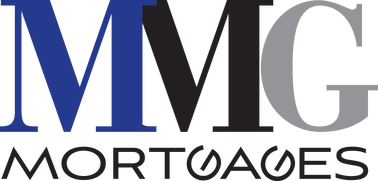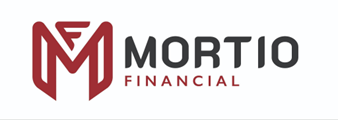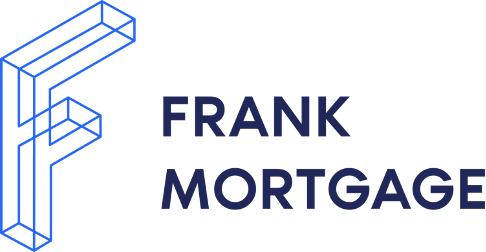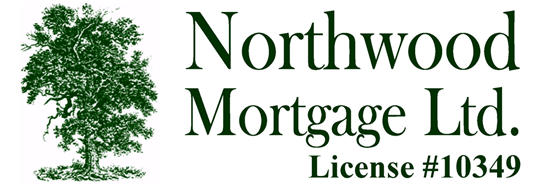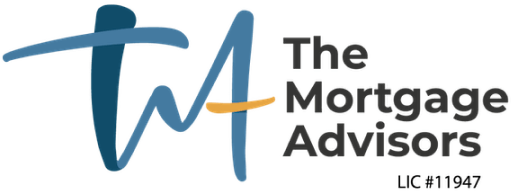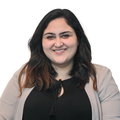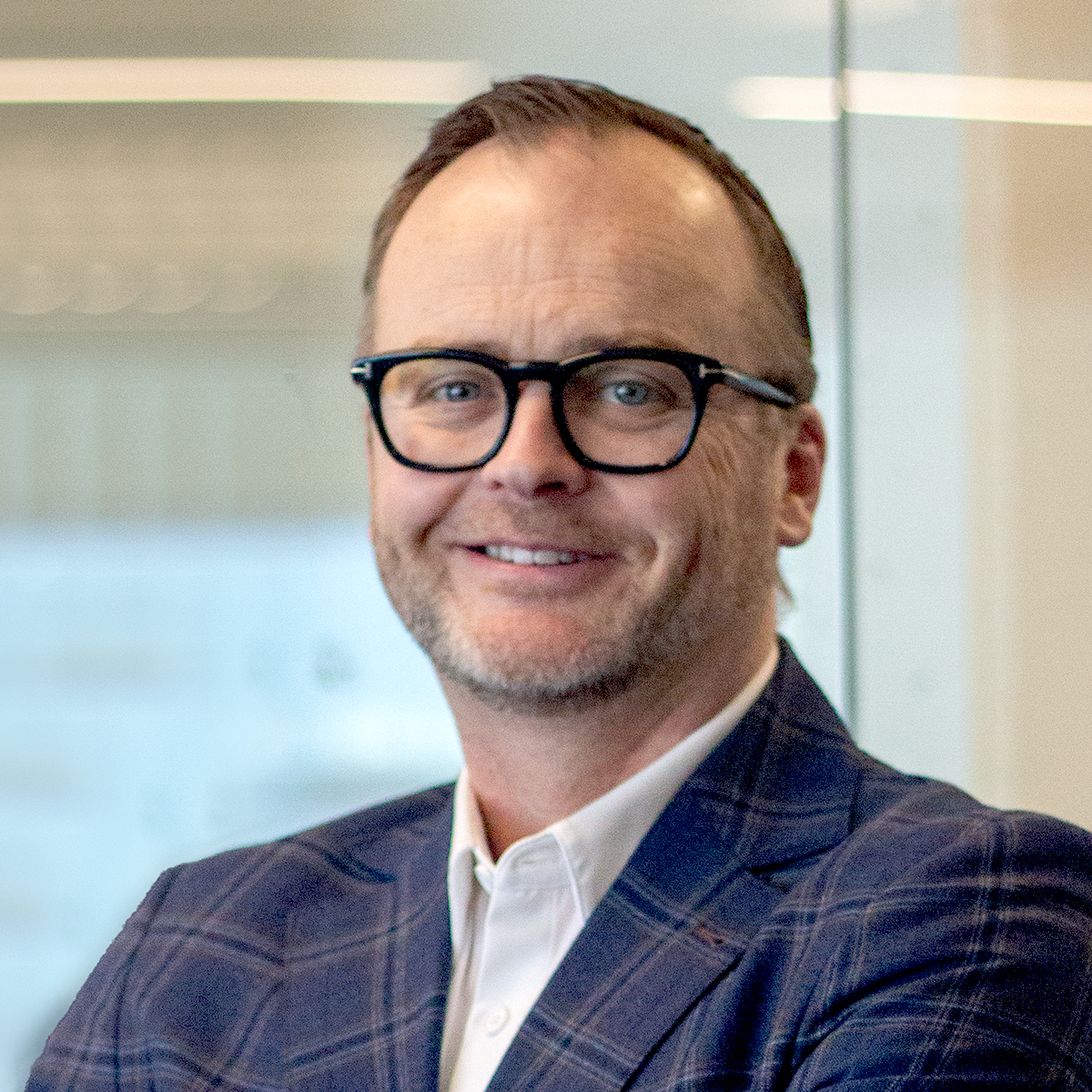The Best Current Mortgage Rates in Canada
Get 20+ mortgage quotes from top banks and lenders
Compare mortgage rates from lenders across Canada





Today's Best Mortgage Rates in Canada
Evaluate Canada’s best mortgage rates in one place. You can compare the most current mortgage rates and monthly payments from 175+ banks and lenders across Canada.
Rates are based on an average mortgage of $500,000 and subject to change based on filter criteria.
| Lender
|
Insured
|
Insurable
|
Uninsured
|
|---|---|---|---|
|
MMG Mortgages
|
3.99%
$2,627.39 / month
|
4.19%
$2,681.85 / month
|
4.14%
$2,668.19 / month
|
|
Mortio Financial Corp
|
3.99%
$2,627.39 / month
|
4.24%
$2,695.56 / month
|
4.14%
$2,668.19 / month
|
|
Frank Mortgage
|
4.09%
$2,654.55 / month
|
4.19%
$2,681.85 / month
|
4.09%
$2,654.55 / month
|
|
Northwood Mortgage Ltd.
|
4.14%
$2,668.19 / month
|
4.24%
$2,695.56 / month
|
4.24%
$2,695.56 / month
|
|
Innovation Federal Credit Union
|
4.39%
$2,736.87 / month
|
4.39%
$2,736.87 / month
|
4.39%
$2,736.87 / month
|
|
True North Mortgage
|
2.99%
$2,363.66 / month
|
2.99%
$2,363.66 / month
|
2.99%
$2,363.66 / month
|
|
The Mortgage Advisors
|
3.87%
$2,594.98 / month
|
3.87%
$2,594.98 / month
|
3.87%
$2,594.98 / month
|
|
Nesto
|
3.91%
$2,605.76 / month
|
3.91%
$2,605.76 / month
|
3.91%
$2,605.76 / month
|
|
Hypotheca
|
3.94%
$2,613.86 / month
|
3.94%
$2,613.86 / month
|
3.94%
$2,613.86 / month
|
|
MortgagestoGo
|
3.94%
$2,613.86 / month
|
3.94%
$2,613.86 / month
|
3.94%
$2,613.86 / month
|
|
One Link Mortgage & Financial
|
3.95%
$2,616.57 / month
|
3.95%
$2,616.57 / month
|
3.95%
$2,616.57 / month
|
|
Monster Mortgage
|
3.99%
$2,627.39 / month
|
3.99%
$2,627.39 / month
|
3.99%
$2,627.39 / month
|
|
The Police Credit Union
|
3.99%
$2,627.39 / month
|
3.99%
$2,627.39 / month
|
3.99%
$2,627.39 / month
|
|
Northern Birch Credit Union
|
3.99%
$2,627.39 / month
|
3.99%
$2,627.39 / month
|
3.99%
$2,627.39 / month
|
|
City Wide Financial Corp
|
3.99%
$2,627.39 / month
|
3.99%
$2,627.39 / month
|
3.99%
$2,627.39 / month
|
|
Sudbury Credit Union
|
3.99%
$2,627.39 / month
|
3.99%
$2,627.39 / month
|
3.99%
$2,627.39 / month
|
|
Mainstreet Credit Union
|
3.99%
$2,627.39 / month
|
3.99%
$2,627.39 / month
|
3.99%
$2,627.39 / month
|
|
East Coast Mortgage Brokers
|
4%
$2,630.10 / month
|
4%
$2,630.10 / month
|
4%
$2,630.10 / month
|
|
Prospera Credit Union
|
4.04%
$2,640.95 / month
|
4.04%
$2,640.95 / month
|
4.04%
$2,640.95 / month
|
The Best Current Mortgage Rates in Canada
Evaluate Canadas best mortgage rates in one place. RATESDOTCAs Rate Matrix lets you compare pricing for all key mortgage types and terms.
Rates are based on an average mortgage of $500,000 and subject to change based on filter criteria.
Updated 20:28 on Jul 18, 2025| Placeholder |
Insured
The rates in this column apply to borrowers who have purchased mortgage default insurance.
This is required when you purchase a home with less than a 20% down payment.
The home must be owner-occupied and the amortization must be 25 years or less.
|
80% LTV
The rates in this column apply to mortgage amounts between 65.01% and 80% of the property value. The home must be owner-occupied and have an amortization of 25 years or less. You must have purchased it for less than $1 million. These rates are not available on refinances. Refinances require "Uninsured" rates.
|
65% LTV
The rates in this column apply to mortgage amounts that are 65% of the property value or less. The home must be owner-occupied and have an amortization of 25 years or less. You must have purchased it for less than $1 million. These rates are not available on refinances. Refinances require "Uninsured" rates.
|
Uninsured
The rates in this column apply to purchases over $1 million, refinances and amortizations over 25 years. More info on the differences between insured and uninsured rates.
|
Bank Rate
Bank Rate is the mortgage interest rate posted by the big banks in Canada.
|
|---|---|---|---|---|---|
| 1-year fixed rate | 4.69% | 4.19% | 4.19% | 5.59% |
5.49%
|
| 2-years fixed rate | 4.04% | 3.89% | 3.89% | 4.54% |
4.79%
|
| 3-years fixed rate | 3.87% | 3.99% | 3.99% | 4.24% |
4.29%
|
| 4-years fixed rate | 3.99% | 3.99% | 3.99% | 4.44% |
4.39%
|
| 5-years fixed rate | 3.91% | 3.89% | 3.89% | 3.91% |
4.09%
|
| 7-years fixed rate | 4.39% | 4.24% | 4.24% | 5.19% |
5.00%
|
| 10-years fixed rate | 5.04% | 4.34% | 4.34% | 5.29% |
6.09%
|
| 3-years variable rate | 4.15% | 4.30% | 4.30% | 4.40% |
6.35%
|
| 5-years variable rate | 3.95% | 3.95% | 3.95% | 4.05% |
4.25%
|
| HELOC rate | N/A | N/A | N/A | N/A |
N/A
|
| Stress Test | 5.25% | 5.25% | 5.25% | 5.25% |
N/A
|
Today's Headline
Ask the Mortgage Expert: Why this could be your window of opportunity into Canadian real estate
Predicting when the absolute bottom will come is like catching a falling knife. But according to mortgage broker and resident expert Steve Garganis, what we have now is a market that is taking a breath, where genuine buyers have a real advantage.
Read moreJul.16.2025
Jump straight to...
- What is a mortgage?
- Mortgage amortization period
- What is mortgage loan insurance?
- How do I know if I need mortgage insurance?
- Where can I get mortgage insurance?
- How to qualify for a mortgage in Canada?
- What affects mortgage rates in Canada?
- Understanding your down payment
- The pros and cons of comparing mortgage rates online
- Mortgage tips for the first-time homebuyer
- Historical Canada mortgage rates
- Frequently asked questions about mortgages in Canada
What is a mortgage?
A mortgage is a loan taken on to buy a home, land, or other real estate. The borrower or purchaser of the home agrees to pay a lender (often a bank) the principal amount plus interest over a set period of time. The property serves as collateral to secure the loan, should the borrower default.
Fixed vs Variable Mortgage Rate and Open vs Closed Mortgage Term
A fixed rate mortgage or loan, also called a term loan, is where the interest rate stays fixed for the entire length of the term (which you and your lender agree upon). For instance, if you get a fixed rate of 4% for a 5-year term, your interest rate and monthly payment will remain the same during those 5 years.
A variable rate mortgage is where the interest rate may change periodically during the mortgage term depending upon economic conditions and the Bank of Canada’s interest rate. While some lenders may keep your monthly payment fixed, other lenders may have your mortgage payment increase or decrease as variable rate fluctuates. This depends on the type of variable rate mortgage (VRM) you choose – between standard VRM, capped VRM and adjustable rate mortgage (ARM). A standard VRM is the one where the payment will be constant during the term with a fluctuating interest rate and the mortgage balance may increase or decrease depending on the rate alteration. The borrower is given adequate notice of the increase in interest rate. A capped VRM is one where the payment is constant during the term with a fluctuating interest rate but only up to the cap rate.
The choice of fixed or variable depends on your appetite for interest rate fluctuations. In a low interest rate environment, a variable rate could save you a lot of money, however if the opposite is true, a variable rate mortgage may seem daunting as your payments fluctuate with the changing rate. On the other hand, with a fixed mortgage rate you don’t have to worry about rate hikes or cuts during the term of your loan.
Within mortgages consumers can opt for closed or open mortgages. Closed mortgages penalize you for paying off all or part of your mortgage early whereas an open mortgage is flexible and allows you to increase your regular payments or pay a lump sum each year.
Mortgage amortization period
The most common amortization period in Canada is 25 years. But this has changed since the Bank of Canada rate hike spree began in March 2022.
The Bank of Canada notes that homeowners are beginning to stretch their budgets by looking for mortgages with amortization periods beyond 25 years. In 2019, the share of buyers seeking longer time frames was at 34% and in 2022 the number rose from 41% to 46% — nearing half of all buyers. In some cases, they are now going as high as 40 years. At the end of 2023, a historically low number i.e. 12% of new mortgages had a loan-to-income ratio above 450%. Also, 47% of new mortgages had an amortization period longer than 25 years, up from 34% in 2019.
The Bank of Canada says, “A longer amortization period reduces the size of monthly payments, helping lower debt-servicing costs, but increases the period of household vulnerability because equity is built more slowly.”
Most recently, the Government of Canada has introduced a new incentive that lets first-time home buyer purchase their first home in Canada with a longer amortization period. Starting August 1, 2024, lenders will be offering 30-year amortization to eligible first-time home buyers purchasing a newly constructed home in Canada.
What is mortgage loan insurance?
Mortgage loan insurance is required for homeowners who purchase a home with less than 20% down payment. This insurance is meant to protect the lender, not you. Your lender pays an insurance premium on mortgage loan insurance. It’s calculated as a percentage of the mortgage and is based on the size of your down payment. Your lender will pass this cost on to you. You can pay it in a lump sum or blend it in your mortgage payments.
The benefit of mortgage loan insurance is that it allows you to buy a home even if you have under 20% of the purchase price saved for a down payment.
How do I know if I need mortgage insurance?
If you purchase a home with less than 20% down payment, you will need mortgage insurance. Your lender needs to protect itself from the risk in case you are unable to meet your loan commitment.
Where can I get mortgage insurance?
There are primarily three mortgage insurance companies in Canada that provide mortgage insurance. Canada Mortgage and Housing Corportation (CMHC), a government-owned entity that operates independently, provides mortgage loan insurance products on various property types including duplexes, condominiums, manufactured or mobile homes and many more, including rental and retirement homes. Private lenders Canada Guaranty and Sagen also provide mortgage insurance to Canadian homebuyers.
How do you qualify for the best mortgage rates?
In this past decade, Canadian borrowers have seen interest rates go from historic lows to highs not seen in decades. This has had the effect of changing how buyers can qualify for mortgages and the stress tests placed on them to assess risk. Between March 2022 and July 2023, Canadian home buyers have seen Bank of Canada’s (BoC) policy interest rate hike at least 10 times, making mortgage interest rates reach historical highs. The BoC finally reduced interest rate in June 2024, the first time in two years and more rate cuts are expected going in to 2025.
The Canadian government introduced the Mortgage Stress Test back in 2016 for mortgage holders who were making a down payment of between 5% and 19% and were required to purchase mortgage default insurance. In 2018, the Office of the Superintendent of Financial Institutions — the government agency that regulates federally incorporated lenders — changed the stress test to include buyers who make a down payment of at least 20% and are uninsured.
The most recent changes to the stress test introduced a new mortgage qualifying rate for all uninsured and insured mortgage applications submitted on or after June 1, 2021. As per the new changes to stress test, buyers must prove they can handle payments based on either the benchmark rate of 5.25% or the rate offered by your lender plus 2% – whichever is higher.
But even with more stringent requirements getting the best mortgage rates requires five main things:
- A good credit score: You will generally need a 680 to 720 FICO score or above. Your co-borrowers, if any, will also need good credit. Like anything else, there are exceptions to this. But the more exceptions you require, the lower your chances of getting the best rate.
- Clean credit: Lenders want to see few or no derogatory items on your credit report. One missed payment in three years might be okay; five missed payments are not, especially if they went to collections.
- Provable income: A lender will usually ask you to prove your full income with tax documents and/or employer pay stubs. You need a two-year history of any bonus income, commissions or part-time income.
- Reasonable debt ratios: If your monthly housing and payment obligations are more than 44% of your gross monthly income, you’ll seldom get the best rates. Moreover, your monthly housing costs (mortgage payment, property taxes, heat and half your condo fees) cannot be more than 39% of your gross monthly income. That 39% limit requires a 680+ credit score, by the way. Otherwise, it’s 35%. Remember this as well. To qualify for the lowest mortgage rates, you’ll have to pass the federal government’s mortgage stress test. All that means is that the lender will calculate your debt ratios using an inflated interest rate. If the lender is offering you a 3.25% rate, for example, it might stress test you to see if you can afford payments at a 5.25% rate.
- Sufficient employment tenure: If you just started your job, you may not qualify with some lenders. Many lenders prefer to see at least a one-year job history if you’re salaried. But again, there are exceptions for those who aren’t salaried. If you're self-employed, you'll likely have to reflect more information about your income and there may be an upper limit to how much you can borrow. See our guide to getting a mortgage as a self-employed person in Canada, here.
What affects mortgage rates in Canada?
- External factors: So much of the economy is intertwined with one element influencing others. Mortgages fall into this pattern and can be influenced by many factors. For example, as inflation has risen around the world, and here at home, central banks have raised interest rates to slow the market. As the Bank of Canada has raised rates to curb inflation, the major banks have followed suit and raised mortgage rates for consumers. This has had the effect of slowing demand and sales, leading to house prices falling as inventory grows.
- Bank of Canada rate: Beginning March 2022, the Bank of Canada began raising its key overnight lending rate for which banks pay to loan money to each other. This has a direct effect on borrowing costs and home mortgage rates. In July 2023, the BoC raised overnight rates again to 5%, with the Bank Rate at 5¼% and the deposit rate at 5%. The Bank said, that inflation dropped from a high of 8.1% to 3.4% in May. As the inflation rate scaled down to 2.7% in June 2024, BoC went for its first rate cut in two years, lowering 25 bps to it’s policy interest rate which now stands at 4.75%. The interest rate is expected to go down further as inflation numbers improve and inch closer to the BoC target of 2%.
- Bond market: Since the Bank of Canada (BoC) began its monetary tightening in 2022, higher interest rates did indeed correspond to rising bond yields. The BoC paused its rate hikes after July 2023. However, bond yields began to fluctuate rather than consistently fall starting in October 2023. Lower bond yields generally lead to lower fixed mortgage rates, but this relationship can be influenced by various factors including economic conditions and market expectations. The idea that falling bond yields might indicate inflation nearing its peak is plausible. However, the risk of recession remains a concern due to ongoing economic uncertainties.
- Supply and demand on real estate: Market demand can also affect mortgage rates. As demand heats up, prices for homes go up but competition from lenders could be a bonus for home buyers looking to buy homes, with banks offering lower rates to win business.
- Factors that determine your own mortgage rate: Yes, inflation, supply and demand, and the Bank of Canada will influence mortgage rates and trends but there are factors that affect you personally. For example:
- Credit score: This will show lenders your trustworthiness and how likely you are to pay down debt.
- Down payment: Paying 20% or less of the house price towards down payment can get you a better rate as the mortgage is insured by CMHC, Canada Guaranty or Sagen, which means the lender limits its risk if you default. A down payment of over 20% would leave the lender at risk as the mortgage is uninsured, but the borrower’s equity in the house would be more, hence comparatively less risk. But a lender is cautious of an uninsured mortgage and might offer a higher rate.
- Type of rate: If you choose a fixed rate mortgage your payment and rate will stay the same throughout your full term. A variable rate mortgage will fluctuate based on the prime lending rate set by the lender.
- Mortgage loan term: The term of the mortgage – 6-months, 3-year, 5-year or 10-year – could be vital in determining the rate you get. It is not always true that you’ll get a lower rate if you choose a 5-year term. You must always evaluate your options with a mortgage broker before locking in one rate for the term of your mortgage.
- Personal Income: Mortgage lenders will want to know you have the ability to pay your mortgage and your debt to income ratio (percentage that evaluates your debt compared to your gross income) can sustain payments.
- Appraisal Value: It is the value of a property determined by different criteria, which influences how much your house is worth. These criteria can range from the square footage and age of the home, renovations done, location, construction quality, number of bathrooms, etc. Appraisal value is just a snapshot of what your home is worth today based on the market conditions and what other similar properties are selling for. A mortgage lender will establish the property value to determine the amount of your mortgage loan. For example, if you put down 20% of down payment for a $1,000,000 home, your estimated mortgage would be $800,000. But if the lender appraises your home at $900,000, you would need to get private funding to cover the $100,000 shortfall.
How to get the best mortgage rates
The best mortgage rates change weekly and RATESDOTCA tracks them all.
But getting the true best mortgage rate isn’t as simple as it seems. That’s because, contrary to popular opinion, the best mortgage rate is often not the lowest mortgage rate. The best mortgage rate is one that minimizes your overall borrowing costs. You can virtually never know that by merely looking at the rate itself. Prudent mortgage research entails more of a process.
It starts with finding the lowest mortgage rates for the most suitable term. That serves as your “shortlist” of mortgage options. You can then review the conditions and features that apply to each rate until you find a mortgage that checks all your boxes.
Understanding your down payment
Deciding on the percentage of down payment is a very important part of your home ownership journey. The money you put towards down payment would determine your mortgage Loan-To-Value (LTV).
Generally, a 80% or higher loan-to-value (borrowers paying less than 20% down payment) means higher risk for the lender. This risk is offset by mortgage loan insurance offered by CMHC, Sagen or Canada Guaranty. The fact that the lender will make up for the loss in case of default can result in the lender offering lower mortgage rates.
When a borrower pays 20% or more down payment, the mortgage does not have to be insured. The borrower has higher equity in their property but the lender takes on the risk as there’s no mortgage insurance to cover them in case of default. A lower loan-to-value ratio can result in higher interest rates as the lenders’ risk is higher.
Having said that, the mortgage rate you receive can also be influenced by other factors such as your credit score, the type of loan, and current market conditions.
| Down payment percentage | Mortgage Balance | Mortgage Rate (Based on 5-year fixed rate) | Total Interest paid during the 5-years term | Monthly Payment | CMHC Premium |
|---|---|---|---|---|---|
| 5% | $570,000 | 4.79% (Insured) | $127,652 | $3,247 | $22,800 |
| 10% | $540,000 | 4.79% (Insured) | $120,933 | $3,076 | $16,740 |
| 20% | $480,000 | 5.04% (Uninsured) | $113,261 | $2,802 | $0 |
Calculators used: Mortgage Insurance Calculator and Canadian Mortgage Payment Calculator
The pros and cons of comparing mortgage rates online
Getting an online mortgage can be a great option for consumers who prefer a fully digital experience – from approval to renewal – compared to an in-person transaction at a traditional financial institution.
If you’re considering that approach, be aware of the advantages and disadvantages:
Pros
- Convenience: With an online mortgage, you’ll never have to set foot in a bank or credit union. You’ll be able to apply for and secure your loan entirely online – either through an online application or app. The underwriting process may also be shorter, so your loan could be approved faster online.
- Comparison shopping: If you’re looking for easy access to a wide-range of mortgage rates, an online mortgage application will make them easily available.
- Discounts: Online mortgage lenders don’t have the same overhead costs as brick and mortar banks. As a result, they may be able to pass on savings to consumers.
Cons
- Service: Keep in mind that while you may get service over the phone, such online brokers or lenders may not have a physical location you can visit to speak to someone. So, if that’s something you prefer, the online route may not be right for you.
- Rate guarantees: While you may be offered a certain rate online, this rate is not a guarantee, as you have to go through further verification to get your final rate.
- Safety: Hacking and data breaches are a potential vulnerability with all lenders since they are all online now. However, all financial institutions in Canada go to great lengths to ensure that customer data is protected.
Mortgage tips for the first-time homebuyer
Buying your first home can be stressful. It’s likely the largest investment you’ll ever make. Here are some helpful mortgage tips to relieve some of that stress.
- Get a pre-approval: Go to your lender to lock in the lowest mortgage rates in Canada and amortization period before you make your purchase. Once you find the home of your dreams you’ll have already prepared yourself for the loan process to move quickly and smoothly.
- Don’t stress about the 20% down payment: You may qualify for mortgage insurance that allows you to provide a lower down payment while providing your lender peace of mind that their loan is secured.
- Comparison shop: RATESDOTCA is your best place to compare mortgage rates from Canada’s top lenders. You’ll get quick quotes and be put in touch with a lender or broker who will be happy to help yo on your journey.
- Pay down debt: Before embarking on one of, if not the largest loan of your life, pay down other credit card debts to free capital. You’ll also help raise your credit score, which will be a positive place to start when talking to lenders.
- Review your budget: Knowing what you can afford will help you in your journey to get the best mortgage rates in Canada. Assess what the costs of home ownership will be to know what you can afford when you speak with lenders.
Historical Canadian mortgage rates
The Canadian economy, like other economies around the world, has been on a roller coaster ride since the COVID-19 pandemic. In response to the pandemic, the Bank of Canada significantly lowered its key interest rate to 0.25% in March 2020 to give impetus to the economy. Mortgage rates were at historic lows, with 5-year fixed rates dropping below 2%.
As a result, inflation began to rise to historic levels, and to control borrowing, the Bank of Canada tightened its monetary policy. Starting March 2022, the BoC began its rate hike spree to curb inflation so by the end of that year, the bank’s interest rate had risen to 4.25%.
After a series of 10 rate hikes, Bank of Canada’s key interest rate recorded a peak of 5% in July 2023. Parallelly, mortgage rates continued to rise as well, making it difficult for new homebuyers to enter the market and existing borrowers strapped to make ends meet.
The Bank paused rate hikes between July 2023 and May 2024, finally taking a 25 basis points cut in June 2024. The inflation rate also slowly came down from 8% in June 2022 to 2.7% in June 2024, owing to the Bank’s tight monetary policy.
Let’s look at interest rates posted for selected products by the major chartered banks:
Mortgage Rates Posted By Major Chartered Banks in Canada
| Year | 1 Year Rate |
3 Year Rate |
5 Year Rate | Prime Rate |
|---|---|---|---|---|
| 2025-01-01 | 6.49% | 6.54% | 7.24% | 5.45% |
| 2024-12-25 | 6.49% | 6.54% | 7.24% | 5.45% |
| 2024-12-18 | 6.49% | 6.54% | 7.24% | 5.45% |
| 2024-12-11 | 6.49% | 6.54% | 7.24% | 5.95% |
| 2024-12-04 | 6.49% | 6.54% | 7.24% | 5.95% |
| 2024-11-27 | 6.49% | 6.54% | 7.24% | 5.95% |
| 2024-11-20 | 6.49% | 6.54% | 7.24% | 5.95% |
| 2024-11-13 | 6.49% | 6.54% | 7.24% | 5.95% |
| 2024-11-06 | 6.49% | 6.54% | 7.24% | 5.95% |
| 2024-10-30 | 6.49% | 6.54% | 7.24% | 5.95% |
| 2024-10-23 | 6.49% | 6.54% | 7.24% | 6.45% |
| 2024-10-16 | 6.49% | 6.54% | 7.24% | 6.45% |
| 2024-10-09 | 6.49% | 6.54% | 7.24% | 6.45% |
| 2024-10-02 | 6.49% | 6.54% | 7.24% | 6.45% |
| 2024-09-25 | 6.49% | 6.54% | 7.24% | 6.45% |
| 2024-09-18 | 6.49% | 6.64% | 7.44% | 6.45% |
| 2024-09-11 | 6.79% | 6.74% | 7.44% | 6.45% |
| 2024-09-04 | 6.59% | 6.75% | 7.64% | 6.70% |
| 2024-08-28 | 6.59% | 6.75% | 7.64% | 6.70% |
| 2024-08-21 | 6.59% | 6.75% | 7.64% | 6.70% |
| 2024-08-14 | 6.79% | 6.94% | 7.74% | 6.70% |
| 2024-08-07 | 6.79% | 6.94% | 7.74% | 6.70% |
| 2024-07-31 | 6.79% | 6.94% | 7.74% | 6.70% |
| 2024-07-24 | 6.79% | 6.94% | 7.74% | 6.95% |
| 2024-07-17 | 6.79% | 6.94% | 7.74% | 6.95% |
| 2024-07-10 | 6.79% | 6.94% | 7.74% | 6.95% |
| 2024-07-03 | 6.79% | 6.95% | 7.84% | 6.95% |
| 2024-06-26 | 6.84% | 6.99% | 7.84% | 6.95% |
| 2024-06-19 | 6.84% | 6.99% | 7.84% | 6.95% |
| 2024-06-12 | 6.84% | 6.99% | 7.84% | 6.95% |
| 2024-06-05 | 6.84% | 6.99% | 7.84% | 7.20% |
| 2024-05-29 | 6.84% | 6.99% | 7.84% | 7.20% |
| 2024-05-22 | 6.84% | 6.99% | 7.84% | 7.20% |
| 2024-05-15 | 6.84% | 6.99% | 7.84% | 7.20% |
| 2024-05-08 | 6.84% | 6.99% | 7.84% | 7.20% |
| 2024-05-01 | 6.84% | 6.99% | 7.84% | 7.20% |
| 2024-04-24 | 6.84% | 6.99% | 7.84% | 7.20% |
| 2024-04-17 | 6.84% | 6.99% | 7.84% | 7.20% |
| 2024-04-10 | 6.84% | 6.99% | 7.84% | 7.20% |
| 2024-04-03 | 6.84% | 6.99% | 7.84% | 7.20% |
| 2024-03-27 | 6.84% | 6.99% | 7.84% | 7.20% |
| 2024-03-20 | 6.84% | 6.99% | 7.84% | 7.20% |
| 2024-03-13 | 6.84% | 6.99% | 7.84% | 7.20% |
| 2024-03-06 | 6.84% | 6.99% | 7.84% | 7.20% |
| 2024-02-28 | 6.84% | 6.99% | 7.84% | 7.20% |
| 2024-02-21 | 6.84% | 6.99% | 7.84% | 7.20% |
| 2024-02-14 | 6.84% | 6.99% | 7.84% | 7.20% |
| 2024-02-07 | 6.79% | 6.99% | 7.84% | 7.20% |
| 2024-01-31 | 6.89% | 7.04% | 7.84% | 7.20% |
| 2024-01-24 | 6.89% | 7.04% | 7.84% | 7.20% |
| 2024-01-17 | 6.89% | 7.05% | 7.84% | 7.20% |
| 2024-01-10 | 7.04% | 7.14% | 7.84% | 7.20% |
| 2024-01-03 | 7.04% | 7.14% | 7.89% | 7.20% |
| 2023-12-27 | 7.04% | 7.14% | 7.89% | 7.20% |
| 2023-12-20 | 7.04% | 7.24% | 7.89% | 7.20% |
| 2023-12-13 | 7.04% | 7.24% | 8.09% | 7.20% |
| 2023-12-06 | 7.04% | 7.24% | 8.09% | 7.20% |
| 2023-11-29 | 7.04% | 7.24% | 8.09% | 7.20% |
| 2023-11-22 | 7.04% | 7.24% | 8.09% | 7.20% |
| 2023-11-15 | 7.04% | 7.24% | 8.09% | 7.20% |
| 2023-11-08 | 7.04% | 7.24% | 8.09% | 7.20% |
| 2023-11-01 | 7.04% | 7.24% | 8.09% | 7.20% |
| 2023-10-25 | 7.04% | 7.14% | 8.09% | 7.20% |
| 2023-10-18 | 7.04% | 7.14% | 8.09% | 7.20% |
| 2023-10-11 | 7.04% | 7.14% | 8.09% | 7.20% |
| 2023-10-04 | 7.04% | 7.14% | 7.84% | 7.20% |
| 2023-09-27 | 6.84% | 7.04% | 7.79% | 7.20% |
| 2023-09-20 | 6.84% | 7.04% | 7.89% | 7.20% |
| 2023-09-13 | 6.84% | 7.04% | 7.89% | 7.20% |
| 2023-09-06 | 6.84% | 7.04% | 7.89% | 7.20% |
| 2023-08-30 | 6.84% | 7.04% | 7.89% | 7.20% |
| 2023-08-23 | 6.79% | 6.89% | 7.89% | 7.20% |
| 2023-08-16 | 6.79% | 6.89% | 7.79% | 7.20% |
| 2023-08-09 | 6.79% | 6.89% | 7.79% | 7.20% |
| 2023-08-02 | 6.79% | 6.95% | 7.79% | 7.20% |
| 2023-07-26 | 6.49% | 6.54% | 7.49% | 7.20% |
| 2023-07-19 | 6.49% | 6.54% | 7.49% | 7.20% |
| 2023-07-12 | 6.49% | 6.54% | 7.69% | 6.95% |
| 2023-07-05 | 6.49% | 6.74% | 7.14% | 6.95% |
| 2023-06-28 | 6.49% | 6.54% | 7.14% | 6.95% |
| 2023-06-21 | 6.49% | 6.40% | 6.94% | 6.95% |
| 2023-06-14 | 6.49% | 6.40% | 6.94% | 6.95% |
| 2023-06-07 | 6.49% | 6.40% | 6.94% | 6.70% |
| 2023-05-31 | 6.49% | 6.24% | 6.34% | 6.70% |
| 2023-05-24 | 6.49% | 6.14% | 6.29% | 6.70% |
| 2023-05-17 | 6.49% | 6.14% | 6.29% | 6.70% |
| 2023-05-10 | 6.49% | 6.14% | 6.29% | 6.70% |
| 2023-05-03 | 6.49% | 6.14% | 6.29% | 6.70% |
| 2023-04-26 | 6.49% | 6.14% | 6.29% | 6.70% |
| 2023-04-19 | 6.49% | 6.14% | 6.29% | 6.70% |
| 2023-04-12 | 6.49% | 6.14% | 6.29% | 6.70% |
| 2023-04-05 | 6.49% | 6.14% | 6.29% | 6.70% |
| 2023-03-29 | 6.49% | 6.14% | 6.29% | 6.70% |
| 2023-03-22 | 6.49% | 6.14% | 6.29% | 6.70% |
| 2023-03-15 | 6.49% | 6.14% | 6.34% | 6.70% |
| 2023-03-08 | 6.49% | 6.14% | 6.34% | 6.70% |
| 2023-03-01 | 6.49% | 6.14% | 6.34% | 6.70% |
| 2023-02-22 | 6.49% | 6.14% | 6.34% | 6.70% |
| 2023-02-15 | 6.49% | 6.14% | 6.34% | 6.70% |
| 2023-02-08 | 6.49% | 6.14% | 6.34% | 6.70% |
| 2023-02-01 | 6.49% | 6.14% | 6.34% | 6.70% |
| 2023-01-25 | 6.49% | 6.14% | 6.34% | 6.45% |
| 2023-01-18 | 6.49% | 6.14% | 6.34% | 6.45% |
| 2023-01-11 | 6.49% | 6.14% | 6.34% | 6.45% |
| 2023-01-04 | 6.49% | 6.14% | 6.34% | 6.45% |
| 2022-12-28 | 6.49% | 6.14% | 6.34% | 6.45% |
| 2022-12-21 | 6.49% | 6.14% | 6.34% | 6.45% |
| 2022-12-14 | 6.49% | 6.14% | 6.34% | 6.45% |
| 2022-12-07 | 6.49% | 6.05% | 6.09% | 5.95% |
| 2022-11-30 | 6.49% | 6.14% | 6.09% | 5.95% |
| 2022-11-23 | 6.49% | 6.04% | 6.09% | 5.95% |
| 2022-11-16 | 6.49% | 6.04% | 6.09% | 5.95% |
| 2022-11-09 | 6.49% | 6.04% | 6.09% | 5.95% |
| 2022-11-02 | 6.49% | 6.04% | 6.09% | 5.95% |
| 2022-10-26 | 6.49% | 6.04% | 6.09% | 5.45% |
| 2022-10-19 | 6.49% | 6.04% | 6.09% | 5.45% |
| 2022-10-12 | 6.14% | 6.04% | 6.09% | 5.45% |
| 2022-10-05 | 6.14% | 6.04% | 6.09% | 5.45% |
| 2022-09-28 | 6.14% | 5.74% | 5.69% | 5.45% |
| 2022-09-21 | 6.14% | 5.64% | 5.69% | 5.45% |
| 2022-09-14 | 6.14% | 5.64% | 5.39% | 5.45% |
| 2022-09-07 | 6.14% | 5.64% | 5.19% | 4.70% |
| 2022-08-31 | 6.14% | 5.64% | 5.19% | 4.70% |
| 2022-08-24 | 6.14% | 5.64% | 5.19% | 4.70% |
| 2022-08-17 | 6.14% | 5.64% | 5.19% | 4.70% |
| 2022-08-10 | 6.14% | 5.64% | 5.19% | 4.70% |
| 2022-08-03 | 6.14% | 5.64% | 5.19% | 4.70% |
| 2022-07-27 | 6.14% | 5.64% | 5.19% | 4.70% |
| 2022-07-20 | 6.04% | 5.39% | 4.74% | 4.70% |
| 2022-07-13 | 6.04% | 5.39% | 4.74% | 3.70% |
| 2022-07-06 | 6.04% | 5.39% | 4.74% | 3.70% |
| 2022-06-29 | 6.04% | 5.39% | 4.74% | 3.70% |
| 2022-06-22 | 6.04% | 5.24% | 4.69% | 3.70% |
| 2022-06-15 | 5.64% | 4.89% | 4.29% | 3.70% |
| 2022-06-08 | 5.39% | 4.49% | 3.79% | 3.70% |
| 2022-06-01 | 5.39% | 4.49% | 3.79% | 3.20% |
| 2022-05-25 | 5.39% | 4.49% | 3.79% | 3.20% |
| 2022-05-18 | 4.99% | 4.39% | 3.49% | 3.20% |
| 2022-05-11 | 4.99% | 4.39% | 3.49% | 3.20% |
| 2022-05-04 | 4.99% | 4.09% | 3.29% | 3.20% |
| 2022-04-27 | 4.99% | 4.09% | 3.29% | 3.20% |
| 2022-04-20 | 4.99% | 3.89% | 3.09% | 3.20% |
| 2022-04-13 | 4.79% | 3.89% | 3.09% | 2.70% |
| 2022-04-06 | 4.79% | 3.89% | 3.09% | 2.70% |
| 2022-03-30 | 4.79% | 3.69% | 2.99% | 2.70% |
| 2022-03-23 | 4.79% | 3.49% | 2.94% | 2.70% |
| 2022-03-16 | 4.79% | 3.49% | 2.79% | 2.70% |
| 2022-03-09 | 4.79% | 3.49% | 2.79% | 2.70% |
| 2022-03-02 | 4.79% | 3.49% | 2.79% | 2.45% |
| 2022-02-23 | 4.79% | 3.49% | 2.79% | 2.45% |
| 2022-02-16 | 4.79% | 3.49% | 2.79% | 2.45% |
| 2022-02-09 | 4.79% | 3.49% | 2.79% | 2.45% |
| 2022-02-02 | 4.79% | 3.49% | 2.79% | 2.45% |
| 2022-01-26 | 4.79% | 3.49% | 2.79% | 2.45% |
| 2022-01-19 | 4.79% | 3.49% | 2.79% | 2.45% |
| 2022-01-12 | 4.79% | 3.49% | 2.79% | 2.45% |
| 2022-01-05 | 4.79% | 3.49% | 2.79% | 2.45% |
| 2021-01-06 | 4.79% | 3.49% | 3.09% | 2.45% |
| 2020-01-01 | 5.19% | 3.94% | 3.64% | 3.95% |
| 2019-01-02 | 5.34% | 4.29% | 3.64% | 3.95% |
| 2018-01-03 | 4.99% | 3.74% | 3.24% | 3.20% |
| 2017-01-04 | 4.64% | 3.39% | 3.14% | 2.70% |
| 2016-01-06 | 4.64% | 3.39% | 3.14% | 2.70% |
| 2015-01-07 | 4.79% | 3.44% | 3.14% | 3.00% |
| 2014-01-01 | 5.34% | 3.95% | 3.14% | 3.00% |
| 2013-01-02 | 5.24% | 3.70% | 3.00% | 3.00% |
| 2012-01-04 | 5.29% | 4.05% | 3.50% | 3.00% |
| 2011-01-05 | 5.19% | 4.15% | 3.35% | 3.00% |
| 2010-01-06 | 5.49% | 4.25% | 3.60% | 2.25% |
| 2009-01-07 | 6.75% | 6.25% | 5.60% | 3.50% |
| 2008-01-02 | 7.54% | 7.55% | 7.35% | 6.00% |
| 2007-01-03 | 6.45% | 6.40% | 6.30% | 6.00% |
| 2006-01-04 | 6.30% | 6.00% | 5.80% | 5.00% |
| 2005-01-05 | 6.05% | 5.60% | 4.80% | 4.25% |
| 2004-01-07 | 6.35% | 5.80% | 4.75% | 4.50% |
| 2003-01-01 | 6.70% | 6.00% | 4.90% | 4.50% |
| 2002-01-02 | 6.85% | 5.75% | 4.60% | 4.00% |
| 2001-01-03 | 7.95% | 7.80% | 7.70% | 7.50% |
All rates presented in this table are the most typical of those offered by the six major Canadian chartered banks in the beginning of each year.
Source: Bank of Canada
Mortgage Calculators
Land Transfer Tax Calculator
Home Closing Cost Calculator
Home Sale Proceeds Calculator
Mortgage Payment Calculator
Mortgage Renewal Calculator
Mortgage Affordability Calculator
Mortgage Stress Test Calculator
Mortgage Insurance Calculator
Land Transfer Tax Calculator
Home Closing Cost Calculator
Home Sale Proceeds Calculator
Frequently asked questions about mortgages in Canada
Have more questions about getting a mortgage in Canada? Get your answers here...
How can I find the best mortgage rates in Canada?
The first place to get the lowest and best mortgage rates in Canada is RATESDOTCA. We will help you compare mortgage rates in Canada and quickly provide quotes as you embark on home ownership.
You can also speak with mortgage brokers who are working for you and will bring you the best rates from a variety of competing lenders. They are not employed by lenders and are required to advise and help you find the best mortgage rates in Canada.
Which mortgage type is the best for the first-time homebuyer?
Everyone is different and operates in different circumstances. If you prefer to know your payments regardless of interest rate fluctuations, then a fixed-rate mortgage is best for you. If you can tolerate market fluctuations, perhaps a variable rate mortgage would suit you. It’s best to talk to your lender about options and what makes sense based on your financial means.
What is a high ratio mortgage?
A high-ratio mortgage is when you make a down payment of less than 20%. This means you have a loan-to-value ratio of more than 80% form your lender. When this occurs, you will be required to take CMHC insurance to protect the lender.
Are the lowest mortgage rates usually online?
Sites like RATESDOTCA can offer you comparison rates from a variety of lenders and usually provide the lowest rates available. Mortgage brokers can also provide advice and comparisons from a variety of lenders for the best mortgage rates in Canada.
What is your prediction for Canadian mortgage rates in 2024-2025?
Accurately predicting the future of mortgage rates is impossible as it depends on factors such as global economic conditions, inflation, and the Bank of Canada’s key interest rate. We have observed in the past that the key indicators of mortgage rates are Bank of Canada’s monetary policy as well as Canadian bond yields (for fixed mortgage rates). As a result of BoC’s monetary policy tightening from March 2022, when inflation rate peaked at 8%, interest rates touched historical highs. With inflation rate lowering to 2.7% in June 2024, closer to the BoC’s target for inflation, and BoC bringing its first rate cut in two years in June 2024 (BoC key policy rate now at 4.75%), we can expect interest rates to start lowering. It is hard to say if mortgage rates will go back to the pre-2022 levels, but we cannot be too sure of that scenario.
Who provides the best mortgage rate in Canada?
The best default insured rates (for people with down payments less than 20%) are typically quoted by mortgage brokers. The best uninsured rates, especially for borrowers with less than 20% down payments, generally come from banks. Some of the most competitive conventional lenders are the new e-banks, which we display in our rate tables.
How can I calculate my mortgage payments?
This Mortgage Payment Calculator shows you your payments and amortization for any rate(s) you find on this website. You can even assume lump-sum prepayments to estimate how much faster you’ll be able to pay down your loan.
Are “Low Frills” mortgages worth it?
Restricted mortgages (a.k.a. “low frills mortgages") have boomed in popularity the last five years. Lenders realize that consumers want the lowest rate, so they’ve tried to strip out features from their mortgages to get the pricing lower. For some borrowers who plan no financing changes for five years, low-frills mortgages may make sense. For most Canadians, the small rate savings isn’t worth the much higher potential costs after closing. Those costs can bite you if you break, port, increase or otherwise refinance before your mortgage maturity date. Hence, for the majority of homeowners, it’s worth the small premium for a “full-featured” mortgage
Do I get a lower rate if I make a bigger down payment?
Generally, not. The lowest rates in Canada are typically offered on default insured mortgages. Those are for people who put down less than 20% on their home purchase. Low insured rates are also available to people who transfer their already-insured mortgage to a new lender. Those who put down 20% or more get conventional rates, which are usually (but not always) higher than insured rates. Occasionally, however, someone putting down 35% or more on a home purchase under $1 million can get great rates similar to high-ratio rates.
*Based on the difference between estimated deep-discount 5-year fixed rates from Canada's top six banks and the lowest comparable rates on RATESDOTCA, as of January 14, 2022.



